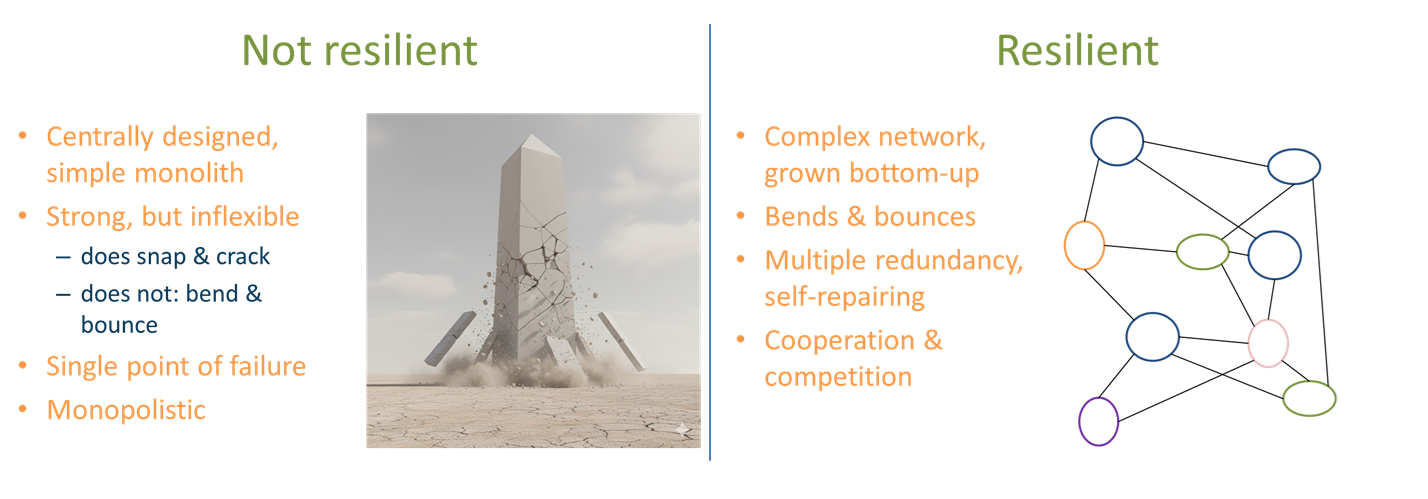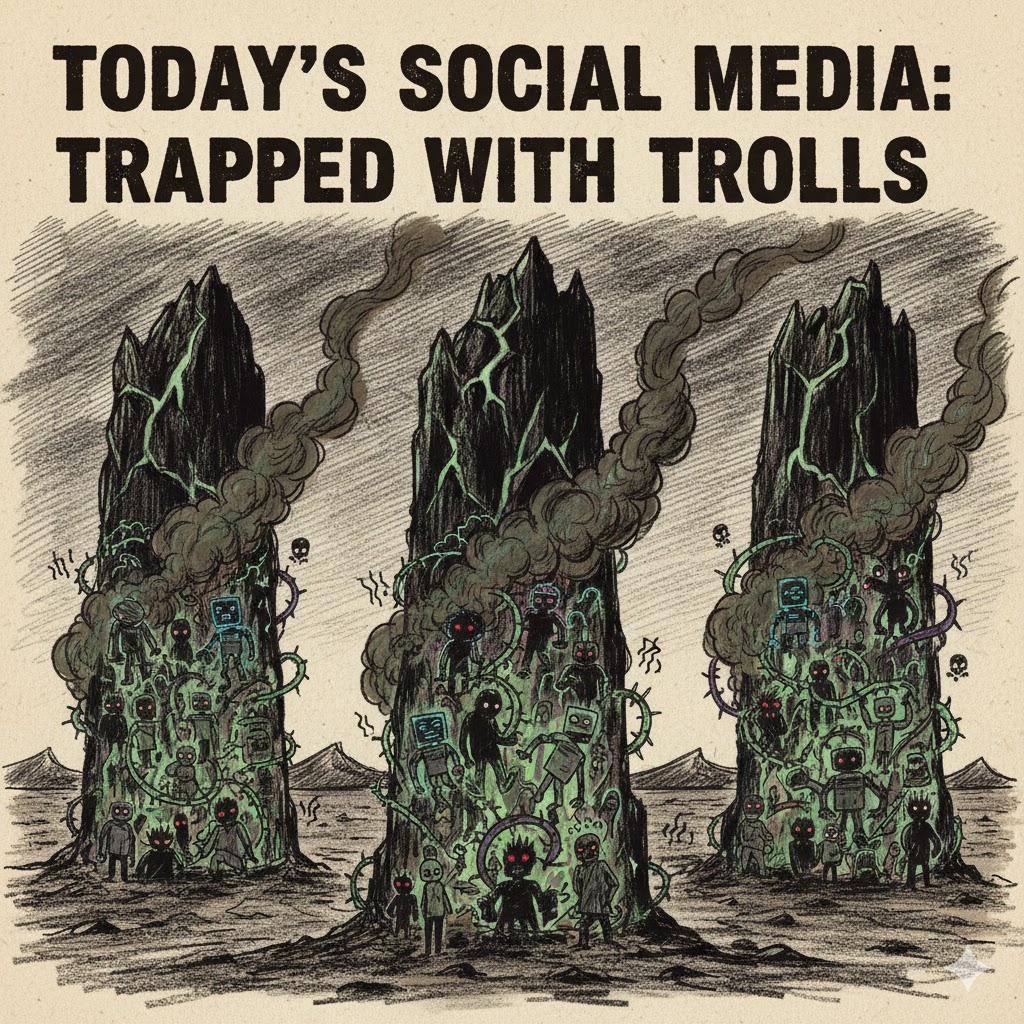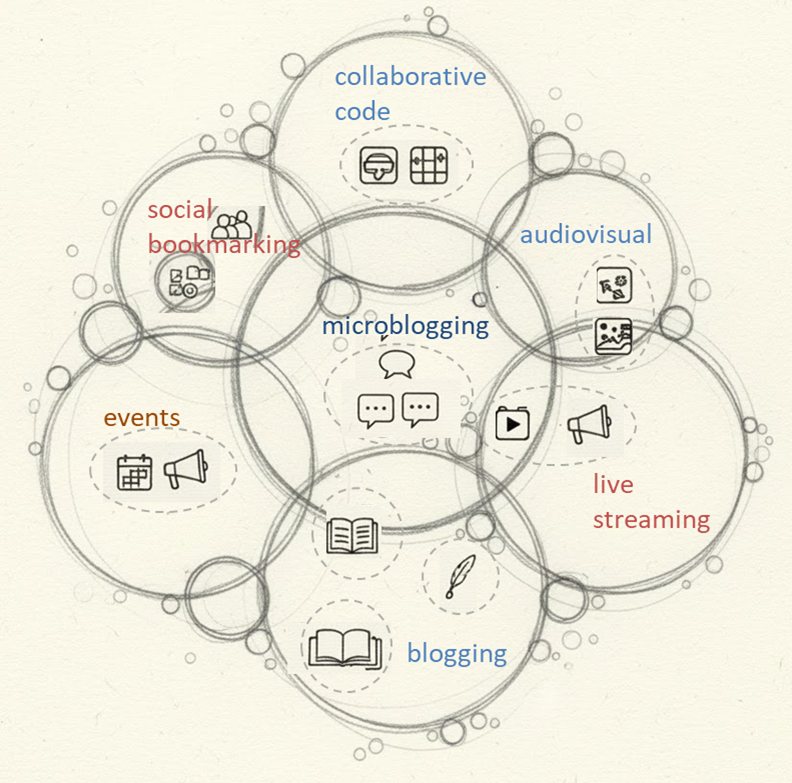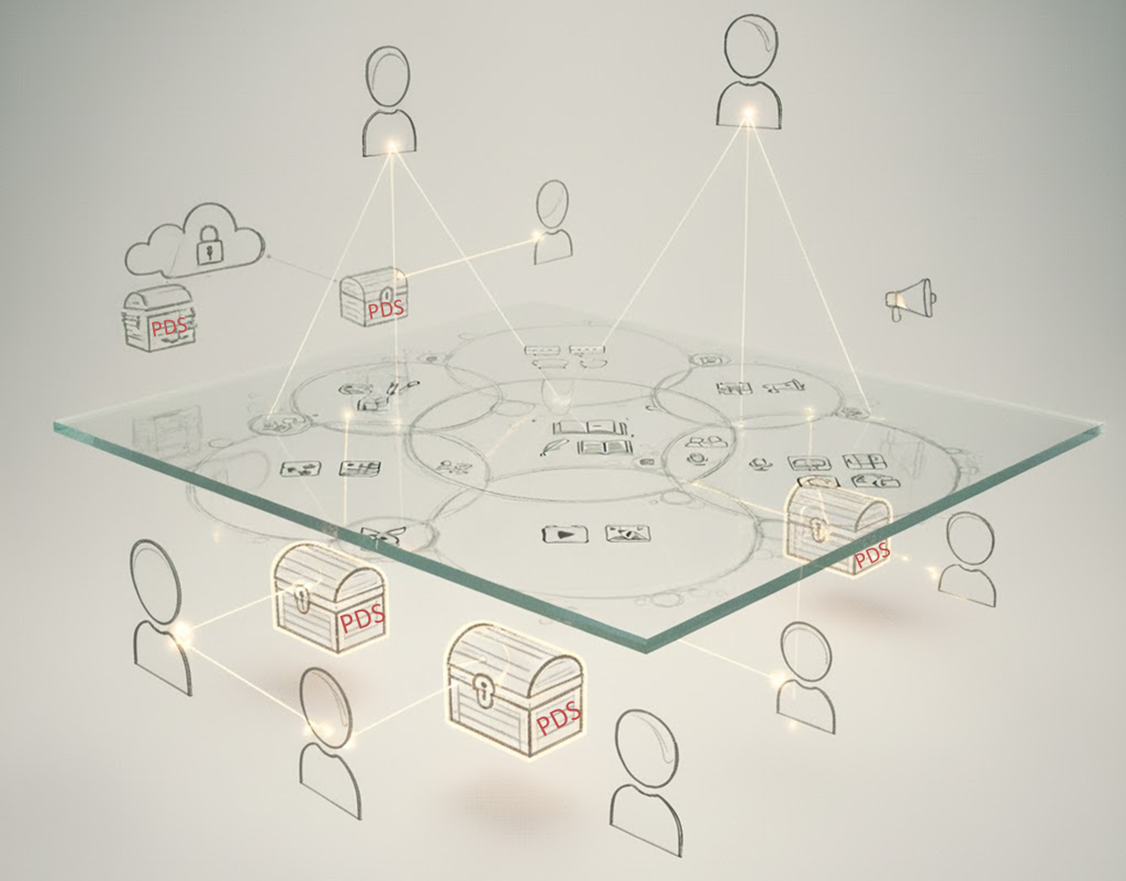Sovereignty in social media is a question of resilience
Everyone's talking about sovereignty. What does that look like in the social media space?
(You're reading a draft post, published using the permanent versions pattern, where I publish a string of versions as I develop my thoughts in the hope of collecting constructive criticism and ideas along the way. Links to the latest and previous versions, if any, are in the footer.)
Next week I'll be in Berlin, speaking at a Franco-German "Summit on European Digital Sovereignty" satellite event to launch eurosky.social. I'll post the video (if they record one) as part of my post-event followup, but today I want to publish some first notes on one of the themes emerging as I and the others prepare for the event: what does sovereignty look like in the social media space?
"what does sovereignty look like in the social media space?"
Unfortunately, noone in Europe seems able to even define what digital sovereignty means. As Caroline de Cock pointed out recently, the term has so many meanings it has become meaningless, serving as "a substitute for thinking and precision... used by anarchist collectives to describe self-managed infrastructure and by governments to justify firewalls".
Applied to social media, digital sovereignty could therefore mean anything from relying on regulating Twitter or Facebook through to trying to create European equivalents.
Neither will work - as de Cock quotes others to point out, "Referees don't win the game... [while] Strategic autonomy ... can easily slide into techno-nationalism... Europe should focus on managing interdependence rather than chasing the mirage of autonomy."
So what does managing interdependence look like? My personal starting point is that European digital sovereignty in social media can only occur in social media ecosystems which are:
- global, as anything less will cut Europeans off from global conversations
- resilient, so Europeans have personal sovereignty on social media, because at the end of the day social media is about people, not governments.
Resilience is key
So let's explore what resilient social media looks like.
Any dictionary will tell you that something is resilient if it can withstand and bounce back from shocks, rather than fissuring and collapsing. It's one of those ideas that's better communicated graphically, and by comparison to its opposite:
! The resilient approach to organising our society's resources, right, is actually the norm, and it's known as "the commons". As David Bollier, author of “Think Like a Commoner" and Creative Commons co-creator, explained to Rabble in a recent Revolution.Social podcast, "the commons is as old as humanity. It's kind of the default setting for coordination and governance... an estimated 2 billion people still depend upon commons of forest, fisheries, irrigation water, wild game... as part of their everyday existence".
The resilient approach to organising our society's resources, right, is actually the norm, and it's known as "the commons". As David Bollier, author of “Think Like a Commoner" and Creative Commons co-creator, explained to Rabble in a recent Revolution.Social podcast, "the commons is as old as humanity. It's kind of the default setting for coordination and governance... an estimated 2 billion people still depend upon commons of forest, fisheries, irrigation water, wild game... as part of their everyday existence".
Unfortunately, commons can be captured, a process also known as enclosure of the commons. It takes significant resources - a monopolist's or venture capital's deep pockets, or a State's heavy hand - but it's happened so much in the Western world these last two centuries that we seem to have almost forgotten that alternatives exist. Which is ironic, given that you're reading this thanks to open-source software, a brilliant example of how noncapitalist methods can create enduringly valuable stuff.
From Blogosphere to X.com
Social media today is a great example of what happens when a commons is captured by a few monopolists.
The original Web2.0 was resilient - a thriving, chaotic, bubbling networks of blogs, using RSS to both sustain cross-network conversations and help everyone follow it.
!
But while blogs still exist, over the past 15 years the blogosphere has been captured, enclosed, refined, distilled, consolidated and agglomerated until we have something looking more like this:
! Image by Gemini, from: "A small number of gigantic monoliths stand separately in a barren desert. Inside these monoliths are users, trapped inside a toxic environment with trolls, bots and lunatics".
Image by Gemini, from: "A small number of gigantic monoliths stand separately in a barren desert. Inside these monoliths are users, trapped inside a toxic environment with trolls, bots and lunatics".
It's not hard to see that we have a problem.
Rebuilding social media resilience
The answer is not new, it just needs to be rediscovered.
Whenever I mention the p-word ("protocol") in Brussels I risk losing half my audience, so let me just point out that the blogosphere, above, thrived because:
- blogs are websites, built on http (hypertext transfer protocol)
- they communicate with each other and subscribers using Really Simple Syndication (RSS), the protocol still underpinning podcasting
- subscribers could also get blog content using email, based on smtp (simple mail transfer protocol)
Why is this important? Because if I use protocols I don't need another p-word: "permission".
"if I use protocols I don't need permission"
The Web is a commons, guaranteed by its protocol. I can build and manage a website and publish it to the world, and noone can stop me (as long as I don't break the law, obviously): I don't need permission to publish, you don't need permission to read, and there's nothing billionaires or governments can do about it if I create something new and interesting.
Diverse forms, even more diverse apps
None of the above protocols were designed for social media.
There are actually hundreds of social media protocols, but only a handful have much traction: ActivityPub, AT protocol ("ATproto") and Nostr. The same thing has happened on all three, with a hugely diverse array of social media forms emerging as people experiment and try stuff out.
This year, for example, has seen the release of a flood of new apps developed on ATproto, created by Bluesky for microblogging. It's the categories which noone's yet thought of, however, that excite me the most:
! Original image by Gemini, post-edited.
Original image by Gemini, post-edited.
Notice that:
- the large circles are different formats, or categories, of social media, and some have multiple "families" (aka "lexicons") - there are multiple lexicons for longform blogging, for example, each with their own strengths and weaknesses
- moreover, each family has multiple apps - most people microblog on the ATmosphere using the Bluesky client, for example, but you can use Tweetdeck-inspired deck.blue, the utterly amazing "slow social" Anisota, Skywalker and many others
- some families straddle boundaries - after all, anyone can build anything, so there's no reason to pay any attention to the artificial categories I've drawn above
- apps can easily interoperate - for example, if you share a Whitewind blog post in Bluesky, your Bluesky post will appear as a comment on the blogpost, neatly integrating short- and long-form conversations.
But the most important thing about the above picture is what is not shown....
Where are the users?
In the ATmosphere, users are independent of apps.
To show this I need to go back to Gemini and ask it to draw in three dimensions:
! Image by Gemini, lightly post-edited
Image by Gemini, lightly post-edited
In the above image:
- users exist independently of the various apps
- each user has one identity, which works on all ATmosphere apps
- users store their data in Personal Data Servers (PDS), which are also independent of the apps.
There's much, much more*1, but the key point is that this makes social lock-in impossible.
This is what resilient social media looks like
Making social lock-in impossible ensures the resilience of protocol-based social media.
People think advertising is the root cause of social media's problems, but they're wrong: advertising, after all, funded the news industry for decades. Social lock-in is the original sin of platform-based social media, trapping users and advertisers in toxic, hate-filled, bot-infested platforms, unable to move away for fear of losing access to their audiences.
"any ATmosphere app which mistreats its users will see them simply move on to a better one"
On the ATmosphere*2, apps do not store their user's accounts or content - users manage these themselves. That means they can move from one app to another, or one hosting service to another, without losing friends, followers or posts.
And that means that any ATmosphere app which mistreats its users will lose them to a better one, taking their social connections and content with them, because they're not trapped.
This is where innovation thrives
With permissionlessness comes innovation, and with innovation comes growth.
The ATmosphere has a virtuous growth cycle built into its DNA:
- Just as I can build any site on the WWW I like, I can build any social app on the ATmosphere I want
- I will have immediate access to the 40m-and-growing users already there, who can use my app using their existing identity
- My app can interoperate with other apps, helping all of us grow
- And every person my new app attracts onto the ATmosphere is available to all the other apps.
Contrast that to the monoliths of social media today. Everything you do on X or Meta's various sites is contingent on them allowing you: they decide if you can stay, what you see, and whether your friends see you. Moreover, you're utterly limited to the features they give you, because those are the features which make them the most money and ensure you remain trapped. Finally, if you try building on top of their technology, they'll pull the rug out from under your feet.
That fear has given the platforms' owners a terrible sense of impunity, and stifled online innovation for over ten years. This impunity must end, both for society's sake and to unleash a new wave of innovative startups.
Sound too good to be true?
There's nothing inevitable about protocol-based social media.
It's easy to be cynical about the prospects. After all, ActivityPub is almost a decade old, and has barely 12m users. ATproto is much newer, but ~99% of the ATmosphere are Bluesky posts, created using the Bluesky app and stored on PDSs supplied by Bluesky Social PBC (the "Bluesky company"). Almost noone I know uses Nostr. And X and Meta are not going to sit on their hands.
While there's nothing inevitable about protocol-based social media going mainstream, it is a future worth fighting for, because it will deliver:
- a global social media ecosystem where social lock-in is impossible
- which is resilient: the protocol disallows single points of failure or control
- and is both user-centric and anti-monopolistic: users can create their own spaces, algorithms and moderation regimes, and can launch companies to provide these to others
- and where each company is regulated according to the laws of their jurisdiction of incorporation.
That looks like "sovereignty through managed interdependence" in social media to me, because it is a global information space within which Europeans can thrive, prosper and compete, without being captured by American or Chinese Big Tech.
Resilient systems are not made, they grow
The question is How.
I have absolutely no idea what will come out of the Summit, or what will appear within the upcoming Democracy Shield. What I do know is that truly resilient systems, by definition, cannot be designed and created top-down by committees operating within hierarchies.
Resilient systems are not made, they grow - we need to think like gardeners rather than architects, and focus on creating the right conditions for innovative startups to invent the future, rather than pouring public funds into replicating winners from the past.
Endnotes
(1) For example, each user can access tens of thousands of "custom feed" algorithms and moderation tools, and can also develop and share their own. These possibilities are incredibly useful to helping each user create the social media experience they want, and also offer real opportunities to create communities, which I'll be exploring in Berlin.
(2) This works a little less effectively on the Fediverse, where the underlying ActivityPub protocol means users can take their connections with them, but leave their content behind.
Revision Notes: This is one of this wiki's pages managed with the permanent versions pattern described in Two wiki authors and a blogger walk into a bar… . Version control - this is version: 3 - this is the current version: Building resilient social media - here is the previous version: Building resilient social media 1